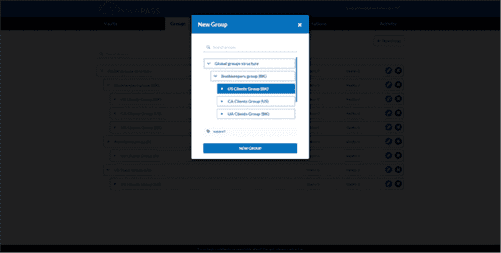When you create an item, evaluate how much time it may take your team to complete. Estimations are important when discussing priority, assigning workloads and communicating expectations to your client. It can also affect how much you bill for the overall project. Representatives of the broader team — team members from product management, engineering, and leadership — should be present at these meetings. Once you finish prioritizing features from your backlog in a few major releases, share your plans with a broader audience. Other teams like sales and engineering will want to see the details of what is coming and when.

Now the product manager tells a story about what the business and customers need. Storytelling is a way to explain what the priorities product backlog management techniques are and make sure everyone understands the « why. » Evaluate the product backlog in the context of your strategic product roadmap.
Techniques at Portfolio and Product Roadmap Level
So, it’s all about the future work expressed as Product Backlog items in the Product Backlog. If you are planning to change to a career in Scrum Master, my experience can help you get there.

First, when a stakeholder comes with an idea or wish, the team would roughly estimate the size of the item. Nobody knows the exact size of a small sized t-shirt but everybody has an idea about the relative difference in size between a small and medium sized shirt. It is the first input for a Product Owner to get an idea on the effort involved in realizing the item. The second part is to assign story points to the item but again in a quick and dirty way. The format often used is Magic estimation or Silent estimation.
Everything You Need To Know About Backlog Refinement
Estimate anything new to assess potential risks and identify possible spikes to run in the next sprint to increase learning and mitigate the risks. Most https://www.globalcloudteam.com/ people find that they need to break a large group like this down into Scrum Teams. Some teams shortcut this process by having one person estimate.

The result is an estimated Product Backlog in relation to a reference item. If no unique size can be assigned to a Product Backlog item, a size between the two values is assigned to it. If a question mark has been assigned to an item, further clarification with the Product Owner’s involvement is needed until a unique size can be assigned.
Tips for Improving Product Backlog Refinement
The Product Owner is not applying theINVEST principle by Bill Waketo items. I invite you to join the“Hands-on Agile” Slack Communityand enjoy the benefits of a fast-growing, vibrant community of agile practitioners from around the world. The following 14 first principles describe in broad strokes the foundation of a successful approach to refinement. There are so many ways of refining a backlog that it would be impossible to give you the best one.
Product managers or product owners are responsible for determining what work will matter most based on customer and business needs. This is an example of a categorized product backlog refined in Aha! Backlog items are organized into different sections in the parking lot based on size and new items that still need review. The Product Backlog refinement is a continuous process to create actionable Product Backlogs. This competence of the Scrum team is critical to creating trust with the management and stakeholders as it allows for the regularly delivery of valuable Increments.
Acceptance Criteria
So during Product Backlog refinement a Development Team can decide to create a spike. This spike will be added to the Sprint Backlog of the current Sprint. Preferably will bring back a result before the next meeting so the item can be brought a step closer to being ready.
- Every item in the backlog is clear and defined, with a reasonable time estimate.
- When an item is ready depends on many different aspects like experience of the Scrum Team or knowledge about the product.
- This competence of the Scrum team is critical to creating trust with the management and stakeholders by regularly delivering valuable Increments.
- Backlog refinement is similar to chopping the vegetables before the dinner rush—in this case, the sprint.
- The same items roll over from sprint to sprint, and teams are unsure why.
If you don’t go through a process of project or product backlog refinement, you’ll waste time trying to make up for insufficient information. You’ll spend more time in Sprint planning just trying to understand which tasks need to be dealt with first, rather than creating your plan and cracking on with the work. Backlog Refinement is a technique to rectify the backlog items for an agile team to deliver. It keeps the backlog fresh, update and ready for the team to work on it immediately. It also helps the Product Owner to get ready with the high priority stories which are required to deliver in the next sprints. In a project that includes various team members, it’s essential to maintain clear and constant communication.
Anatomy of an Agile User Story Map
This gives the Product Backlog a level of transparency that reduces the risk. The risk is exposed by not completing an item within a Sprint and thus giving away the opportunity to generate value for the organization. That is why refinement is an essential Product Management activity that successful Scrum Teams need to master. If you are adapting agile to work on time-bound projects, Backlog Refinement will be particularly vital.

Those teams typically struggle to deliver complete backlog items at the end of each sprint. Though some people treat product backlog refinement as one of the Scrum events, technically it is not one of the 4 events. However, product backlog refinement is often accomplished with regular meetings that are scheduled throughout each sprint. Backlog refinement is when a product manager reviews items in their backlog to discuss their importance and rank them by priority. The backlog is the list of items that have yet to be completed by the project team.
More relevant reading
As a product manager, you use backlog refinement and sprint planning to re-evaluate your progress and plan for the future. Unlike a more formal “requirements document” the backlog is understood as a dynamic body of information. In the absence of explicit efforts aimed at managing this inflation, this inflation would result in the too well known pathologies of schedule and budget overruns.
